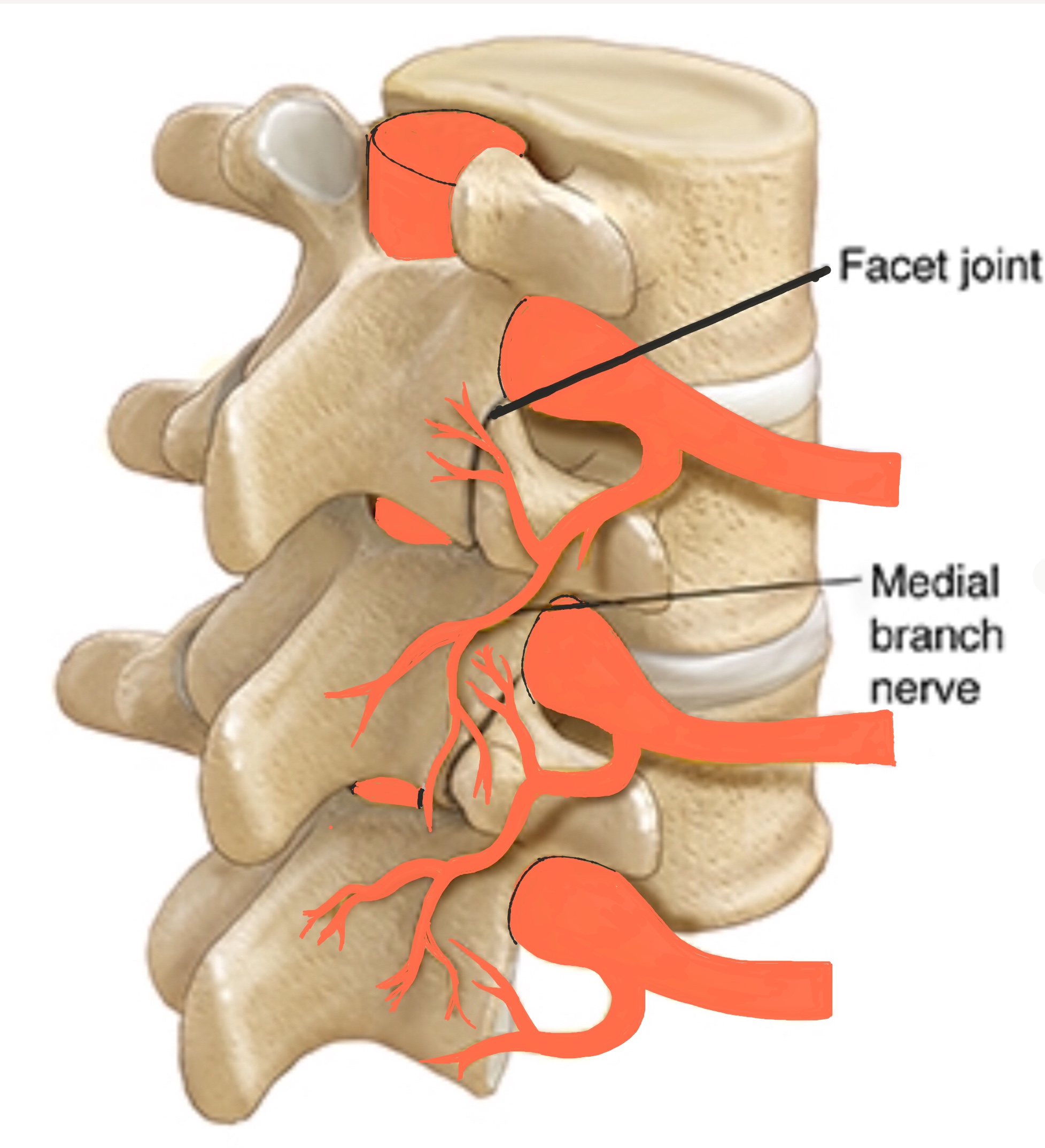Medial branch blocks or injections are used as a both a treatment and as a diagnotistic tool. The steroid part of the injection helps to reduce inflammation and therefore pain within a specific facet joint. The local anaesthetic part of the injection serves as the diagnostic tool and helps to confirm, or exclude, that the pain is originating from the facet joints and not, for example, the hips or elsewhere in the spine.
Mr Hilton performs all spinal injections in theatre and under X-ray guidance. He will also give you the choice of having the procedure performed under sedation or local anaesthetic.
What are the Medial Branch Nerves?
The vertebrae in the spine and the intervertebral discs are surrounded by muscles which are called the ‘core muscles’. Between each vertebrae has a pair of joints which are mobile, interlock with each other and have some of the core muscles attaching to them; these joints are called the ‘facet joints’. The facet joints slide over each other allowing the spine to bend and twist. Like all joints, both joint surfaces are coated with cartilage.
A small capsule surrounds each facet joint and provides a lubricant for the joint and contains nerve fibres called the ‘Medial Branch Nerves’ (see on diagram). These nerves send pain signals to the brain from their specific facet joint when there is irritation or inflammation.

How is a medial branch block performed?
Mr Hilton performs all spinal injections under X-ray guidance to guarantee the injection is in exactly the right place. Patients are taken into the operating suite; some elect to have the procedure under sedation and other choose to have it under local anaesthetic. Either way, patients have the procedure lying on their front on the operating table.
The image intensifier (a special X-ray machine) is used to guide a special needle close to the medial branch nerve which is supplying the specific affected facet joints. Then a special dye is injected to confirm the correct position on the X-ray before the local anaesthetic and steroid is injected around the nerve.
Medial branch blocks differ from a facet joint injection because the injection does not go into the affected facet joint.
One Question That Is Always Asked: How Long Will It Last?
The answer is, everyone is different; for some people the pain relief from Medial Branch Blocks can last many months or years but for others, the benefit may only last a a few weeks or even a few hours.
If the benefit is only short-lived or you gain no benefit at all at anytime, it maybe very disappointing but do not worry; it has not failed because it has been very useful diagnostically to help determine which area of the spine is causing the problem. This is extremely useful when further treatment is being considered. If you gain significant benefit (pain relief, improved mobility and function) but the benefit is short-lived, then Facet Joint Denervation can be considered.
Likewise, you may gain no benefit at all, not even for the few hours immediately after the injection. Again, this can be disappointing. It has not “failed”, instead it strongly suggests that the pain is not originating from those particular facet joints. This is important information.
After you have had the procedure, it is very helpful if you can keep a note as to how your symptoms change especially in the first few hours after the injection and over the next few days.
Recovery
Immediately following the procedure, patients spend some time within the recovery area of theatres where they are monitored. Following this, they are able to be discharged home.
Patients who have had sedation will be unable to drive home and should not drive the following day. Patients are able to mobilize as comfortable but should take the following day off work. Patients should only experience minor pain following the procedure. Physiotherapy and exercise should be started as soon as possible following the procedure.


